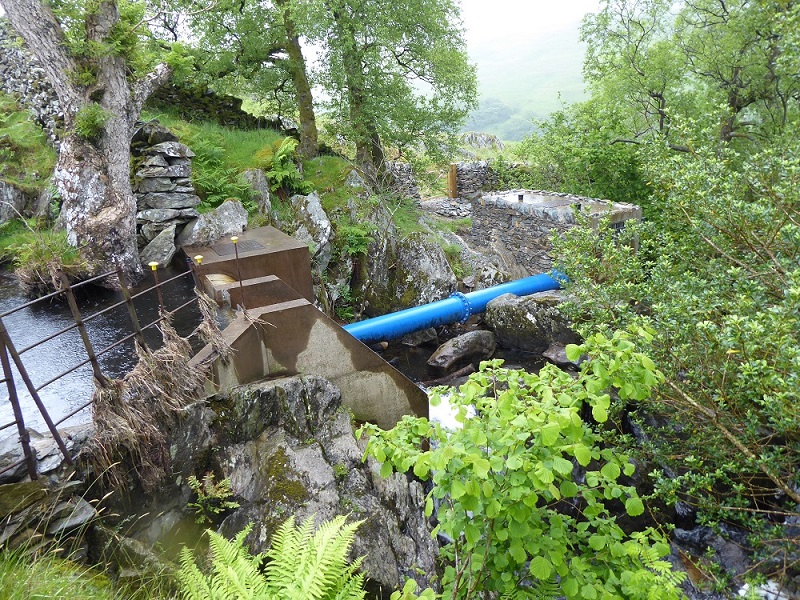
A couple of hours after after my encounter with a young peregrine on Sunday (see here), I came across a run of river hydro scheme along Wounddale beck north east of Ambleside. What caught my eye was that the pipeline between the intake and the powerhouse had been left above ground:
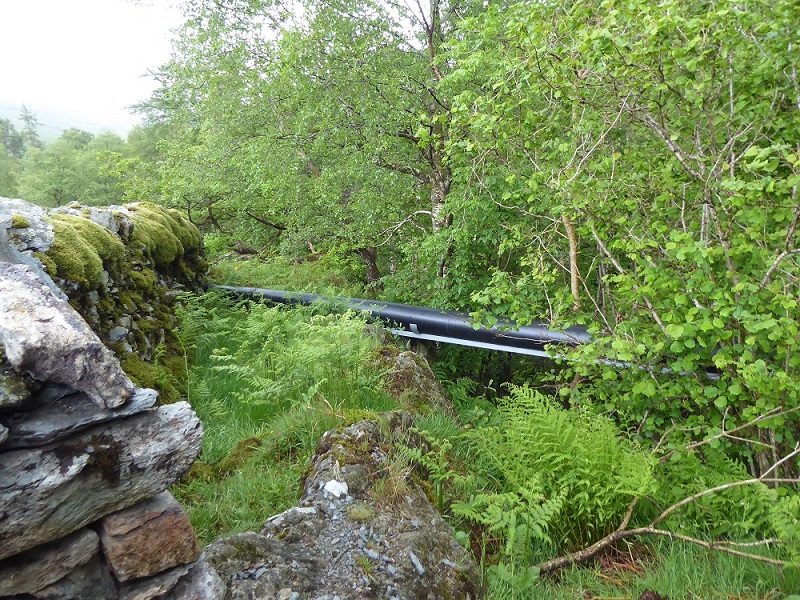
My initial reaction was “they haven’t even bothered to bury it” but then I considered the actual landscape impact. The location – running alongside a wall and wooded gorge – and the size of the pipe meant it was hardly visible except from close up and by mid-summer it will have almost completely disappeared in the bracken:
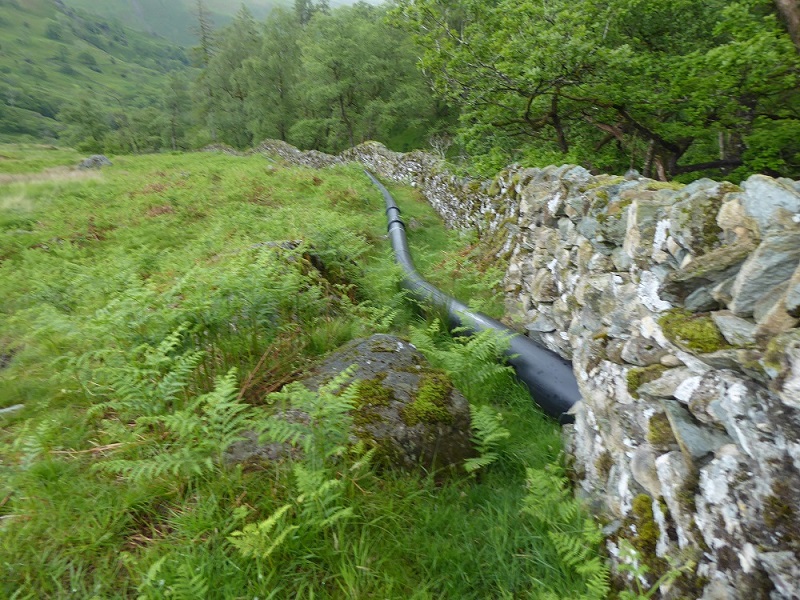
In Scotland’s National Parks, the pipelines for run of river hydro schemes are buried as a matter of course on the grounds that this reduces their landscape impact.
Ironically, the consequence has been that the landscape is now littered with new tracks (as I discussed in my recent post on Glen Etive), landforms have been destroyed and the vegetation above the buried pipeline takes years to recover, if at all. The Wounddale beck hydro scheme has avoided all that damage by the simple expedient of leaving the pipe above the ground.
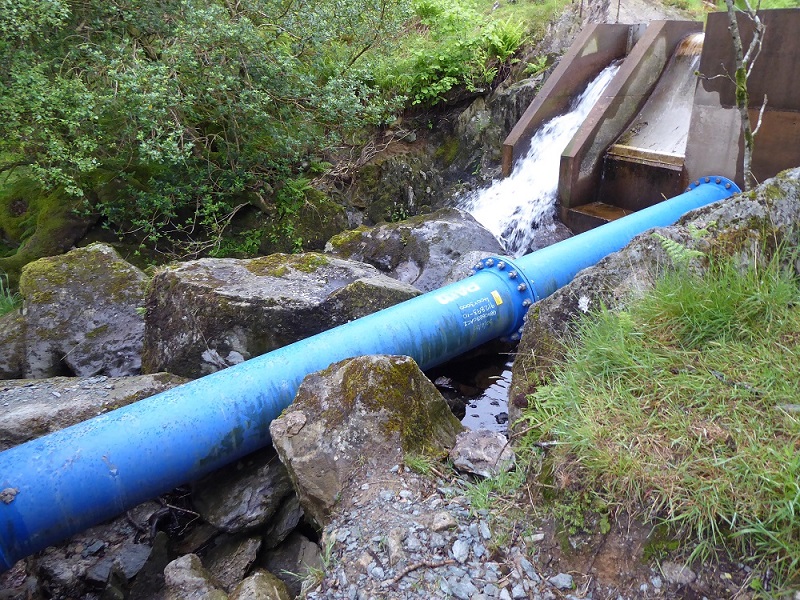
There are other advantages to leaving the pipeline above ground. It reduces ecological impacts. It means that signficantly less fossil fuel is used in the construction process – while showing the public just how much carbon, in the form of plastic, is needed to build these schemes! It also means that when the pipe has reached the end of its useful life should be much easier to replace, remove or recycle.
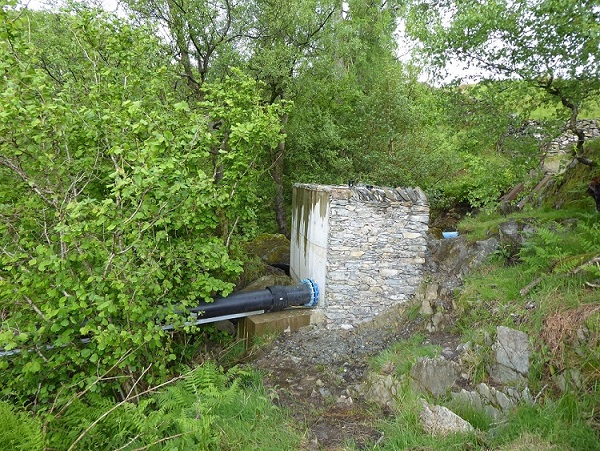
Is this landscape heresy? The question is whether leaving the pipes above ground, as at Wounddale Beck would not have been better for places like Glen Falloch and Glen Etive in the long-term, particularly if grazing levels were reduced and woodland allowed to regenerate around the pipeline? It would certainly make it considerably easier and cheaper in the medium term to remove some of the more disastrous schemes that have afflicted our National Parks and National Scenic Areas.
Perhaps a nice back ground colour green Dark green or stone would help
A planning condition fofcabove ground pipes and fenced corridor 200m wide around the pipes left yo regenerate.
But this is Scotland where we, well many land owners and those who work for them, love the big machines with lots of power, the bigger the better. And as with most construction schemes, the the more there is to be done the more money there is to be made. Simplifying and minimising the amount of intervention, working with nature to screen a structure and, dare I suggest it, even improve biodiversity at the same time is almost always dismissed as an avoidable costly extra. This is a welcome and interesting exception.
The obvious main natural environment impact of these schemes is on fish habitat. It’s clear water is being abstracted from the river upstream, diverted and is then re-introduced into the watercourse downstream. So where is the research on the impact of these schemes on fish populations? I mean if all that’s left to discuss is the “scenery” then what is the purpose of the First Aim for when the natural heritage interests have been marginalised and reduced to a PR gimmick? My concerns here are local, national and international. These and a vast number of other “green schemes” have been Government approved in line with Government environment and economic policy. Everyone should know by now, instead of being blindsided by green agendas, all land use planning has to do with economic growth and that is always under someone’s economic power and control. I remember Graham U’ren of the RTPI speaking at a conference in Glasgow. He came straight out with it. The economics are decisive. That may be the 4th Aim for the NP but it’s the 1st Aim for the rest in capitalist societies. As such, the ruling class powers that be have co-opted all of these so called benign green schemes and turned the response to global warming and climate change into a $multi-trillion gravy train for warmongering profiteers and imperialists. None of this stops up a local burn. They’ve got a price tag on every burn and river on the planet. And they’ve got the armed forces and death squads there for insurance in case local communities go off message. So you better watch out….the Green Gestapo’s about. Don’t get recruited and conscripted to do their dirty work. The funding and support for all of these rackets is coming out of the Public Purse.